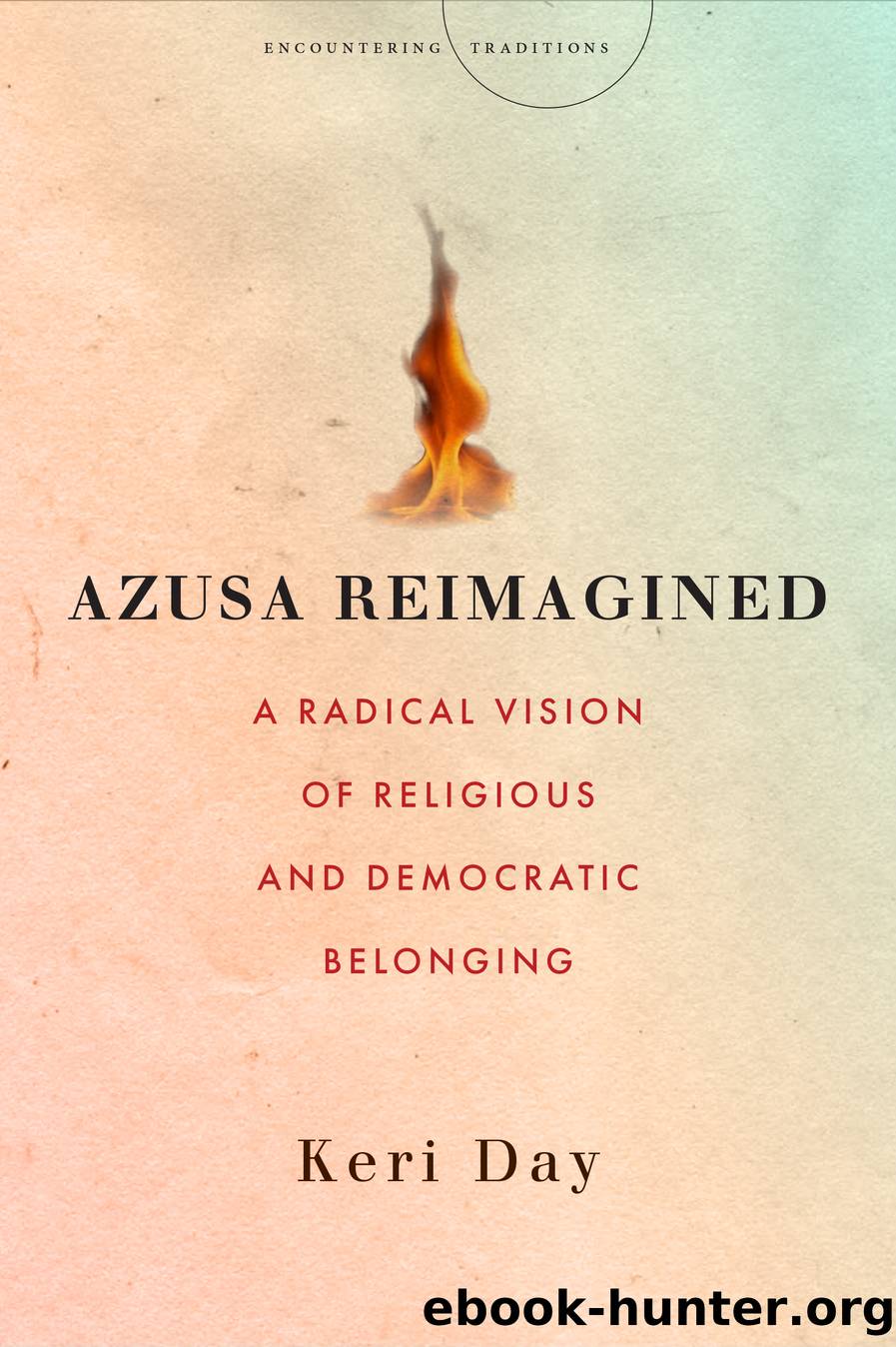Azusa Reimagined by Keri Day

Author:Keri Day
Language: eng
Format: epub
Publisher: Stanford University Press
Published: 2022-06-15T00:00:00+00:00
The erotic life of the world fairs and business expositions was about a particular kind of racial welcoming and intimacy. Let us revisit for a moment the Columbian Exposition of 1893 to see how the erotic life of racism was in service to market ends, which was the context out of which Azusa emerged. The language of the New Pentecost that this exposition employed was undergirded by a desire for white racial bonding. To actualize the Anglo-Saxon vision of capitalist progress and cultural purity, a set of white racial intimacies, desires, and dependencies had to bind the nation together, and these intimacies needed to be felt experiences that appeared natural and given. For whites, this world fair participated in erotic economies of whiteness that fostered intense desire and passion for white purity and belonging through the sexual objectification and degradation of blacks, Native Americans, Chinese, and others. And whites experienced such white racial bonding as both painful and pleasurable.
Consider this erotic scene of racist desire in service to capitalist ends. Recall Midway Plaisance at the Chicago Columbian Exposition of 1893, a narrow strip of land at the fair that showcased ethnological villages from different nations and cultures. These villages often actually housed people from different parts of the world and their artifacts, and highlighted their customs and traditions. One village introduced the Dahomeyans to visitors. Dahomeyan people lived on the Gulf of Guinea. Roughly sixty-seven were in the Dahomeyan delegation, and when they arrived they generated great interest among white Americans.18 Among visitors, these Africans were seen as having a âstriking degree of barbarianism and seen as part of the lowest orderâ of the human family.19 Dahomeyan men and women were discussed in books and at the fairs as hypersexual and culturally dangerous, the very symbols of moral impurity. European explorers remarked that these African people wore no clothes in their natural habitat in Africa, which, they insisted, gestured towards their morally barbaric and sexually lewd ways.20 One could hear the erotic overtones in how these people were discussed and represented.
Ponder how Dahomeyan men and women were culturally represented. One American journalist described that these men could âbalance a truck on their heads.â21 Notice that the Dahomeyan men are described through American cultural representations that long characterized African-American men. For instance, African-American men were portrayed as âviolent bucksâ who had supernatural physical strength that had to be tamed and kept under control.22 Because these men were characterized as unusually strong and therefore given to passionate violence of all kinds (emotional, physical, and sexual), whites rationalized and justified racist laws and practices that kept them in âtheir place.â One particular aspect of the violent buck was how he used his sexual strength and prowess to rape white women. As black female activist Ida B. Wells-Barnett demonstrated through her own investigative journalism, the raping of white women by black men colored the white American imagination, although this picture of black men was untrue.23 No matter how domesticated these men might appear, they were ânothing more than violent, passionate beasts of preyâ to whites.
Download
This site does not store any files on its server. We only index and link to content provided by other sites. Please contact the content providers to delete copyright contents if any and email us, we'll remove relevant links or contents immediately.
| Buddhism | Christianity |
| Ethnic & Tribal | General |
| Hinduism | Islam |
| Judaism | New Age, Mythology & Occult |
| Religion, Politics & State |
Cecilia; Or, Memoirs of an Heiress — Volume 1 by Fanny Burney(31348)
Cecilia; Or, Memoirs of an Heiress — Volume 3 by Fanny Burney(30946)
Cecilia; Or, Memoirs of an Heiress — Volume 2 by Fanny Burney(30905)
The Secret History by Donna Tartt(16656)
Sapiens: A Brief History of Humankind by Yuval Noah Harari(13071)
Leonardo da Vinci by Walter Isaacson(11914)
The Radium Girls by Kate Moore(10914)
Sapiens by Yuval Noah Harari(4550)
The Wind in My Hair by Masih Alinejad(4427)
How Democracies Die by Steven Levitsky & Daniel Ziblatt(4408)
Homo Deus: A Brief History of Tomorrow by Yuval Noah Harari(4287)
Endurance: Shackleton's Incredible Voyage by Alfred Lansing(3853)
The Silk Roads by Peter Frankopan(3775)
Man's Search for Meaning by Viktor Frankl(3646)
Millionaire: The Philanderer, Gambler, and Duelist Who Invented Modern Finance by Janet Gleeson(3575)
The Rape of Nanking by Iris Chang(3525)
Hitler in Los Angeles by Steven J. Ross(3446)
The Motorcycle Diaries by Ernesto Che Guevara(3343)
Joan of Arc by Mary Gordon(3268)
